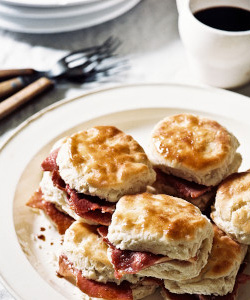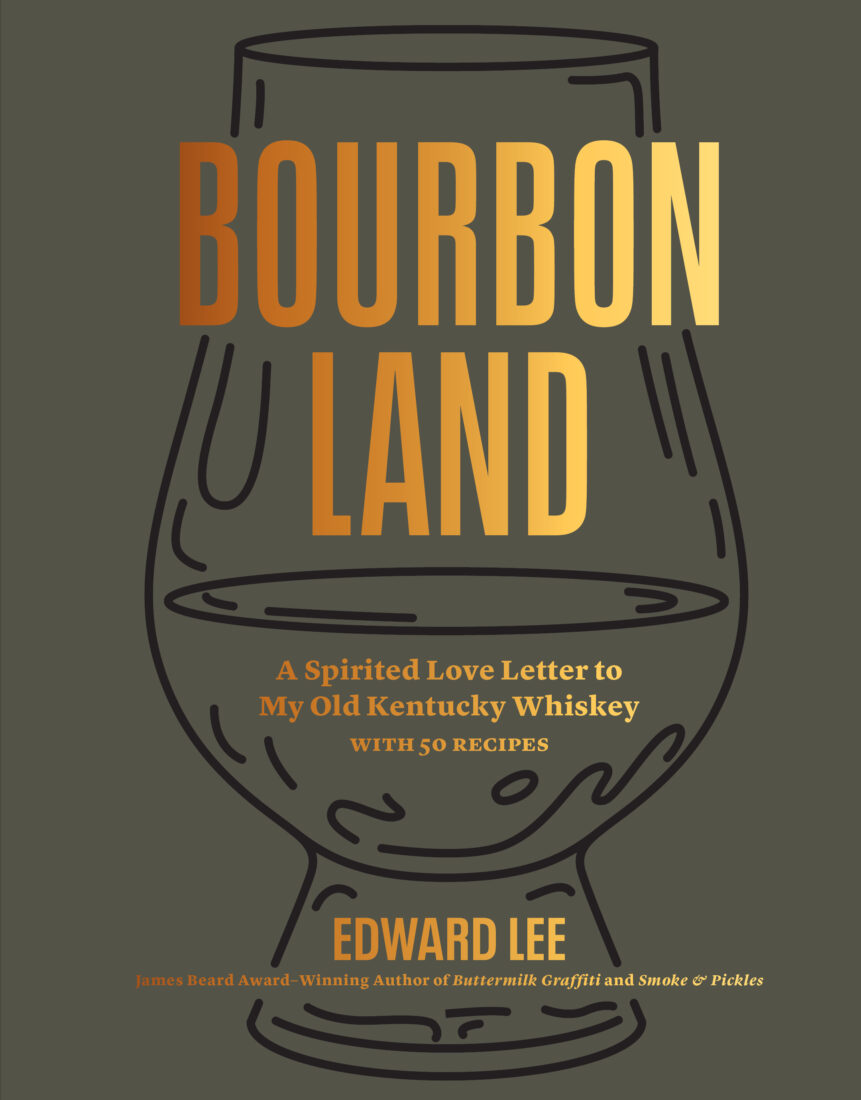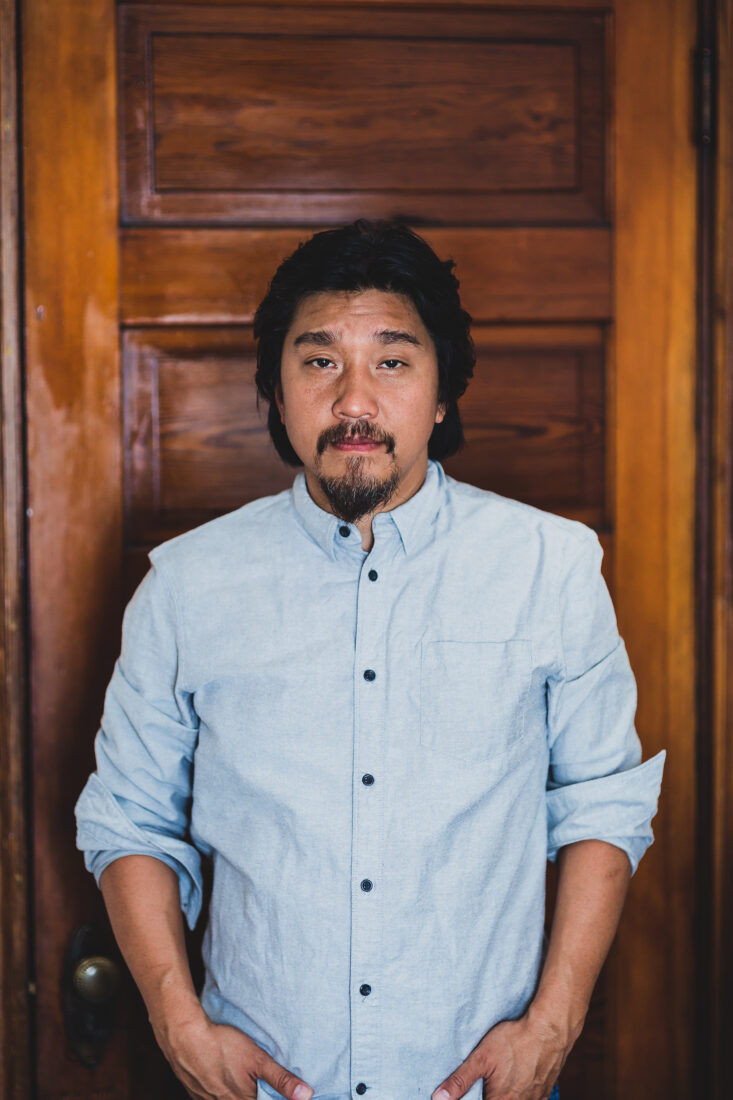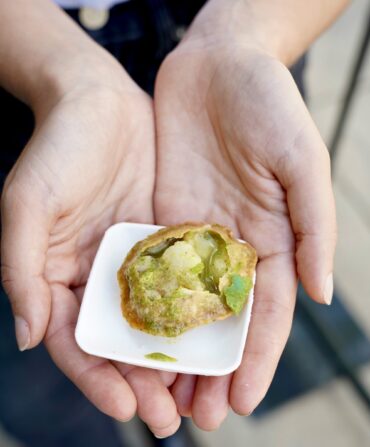Chef Edward Lee’s two previous cookbooks, Smoke and Pickles and the James Beard Award–winning Buttermilk Graffiti, explored the melding of cultures and influences that permeate Southern cuisine. In his latest, Lee takes a deep dive into a subject that’s also baked into the fabric of the South, and especially the culture of his adopted home state of Kentucky—bourbon. In Bourbon Land, Lee covers the spirit’s history and essential components, and learns from the craftspeople who take it from grain to glass. He also explores the Bluegrass State’s bourbon landscape, with sections on each region’s distilleries, and since this is at heart a cookbook, he offers up some fifty original recipes ranging from whiskey onion soup and bourbon-glazed chicken wings to bourbon-cured salmon salad and slow-grilled Chinese eggplant in bourbon miso. We spoke with Lee, the owner of 610 Magnolia and Nami in Louisville, and the culinary director of Succotash Prime and Succotash National Harbor in Washington, D.C., and Maryland, about what bourbon brings to food and his long-standing love affair with America’s native spirit.

How long have you been thinking about writing a bourbon book?

I’ve been in Louisville for twenty-two years, and I’ve been cooking with bourbon since the beginning. I’ve always felt like there is more to the story than barbecue and bourbon balls. The majority of books around bourbon, from a culinary standpoint, include a lot of grilling and barbecue, which is fine, but bourbon has a lot more versatility.
None of my cookbooks are just about food. I want to tell a story. Bourbon can legally be made anywhere in the U.S., but for me it’s about Kentucky bourbon. Kentucky has had a two-hundred-year head start. This is the birthplace of bourbon and where the culture of it remains strong. I want to capture a little bit of this moment before some of the old-timers go away. I am not a historian or a preservationist, but in telling this story, I hope to add a little bit to the legacy of Kentucky.
You open the book with a section about “who bourbon is” rather than “what bourbon is.” Does bourbon have a personality?
For many people in Kentucky, bourbon is more than just a libation. It’s a way of life. Many of these people who are legends in the bourbon industry are just neighbors to me. When I see a bottle of bourbon, I don’t geek out over the mash bill or the char level or whatever. I see the human beings who created it and the history and the tradition. When you talk to the people who work in the distilleries or the guy who welds the copper stills, they’re kind of flabbergasted that this product is going to Japan or to London or into a cocktail in Las Vegas. Today, bourbon is a luxury drink and it’s only going to get more so, but in the early days, it was not a fancy thing to be coveted. It was what you drank at the end of a hard day of work.
You can talk about celebrity chefs as much as you want, but, to me, cooking is still a blue-collar job, and there’s nothing better than a bourbon on ice at the end of a long shift. It’s the drink that most speaks to me.

Did developing these recipes enhance your own appreciation for bourbon?
It did, which I think is true any time you take a deep dive into something. We tasted a lot of bourbons, but you know, in the book, I never suggest cooking with expensive bourbon. I’m also not taking an entire bottle and reducing it down. It’s more subtle, but it’s definitely in there. Like anything good, these recipes force you to take a little time and search for it. Close your eyes for a moment. Slow it down.
I think it’s important that there are things in this world that get you off your phone and into a room with people who you want to spend time with. Bourbon takes time. Let’s say we’re drinking a ten-year-old bourbon. Where were you ten years ago? What were you thinking? What were you doing? Bourbon is one of those things that gives you pause to appreciate life, appreciate the food a little more, and appreciate the company you’re with.
Distillers go to great lengths to keep flames away from their products. Are there any special considerations when cooking with bourbon?
With flames—and it will flame—the biggest thing is don’t panic, because all fires are not the same. When you see a flame coming out of your pot from bourbon, you know it’s ethanol, which burns itself out quickly. Don’t add water or run for a fire extinguisher. Just have a tight-fitting lid nearby, which will tamp the flame out in seconds. If I’m reducing something with bourbon, I keep a lid on the pot pushed an inch or two off to the side. You’re still getting air circulation and evaporation, but it won’t be as flammable, and you can control it. I also use tongs to adjust the lid handle, not my hands.
What are some good bourbons to cook with?
I get that question every time I do a cooking demo, but really the label doesn’t matter. If you like the flavor of a bourbon to drink, you’ll like it in your food as well. There are two dominant mash bills in bourbon. Wheated bourbons are going to give you a softer, sweeter flavor that leads you toward desserts. Then there are high-rye mash bills, which tend to be a little sharper and spicier. Those are good in savory applications.
There’s also a sense of, when you cook with bourbon, you have to do only Southern recipes. That works, but there’s a wider range. I was just in a couple of nice restaurants in Korea, and they had bourbon on the menu. It’s like, All right, bourbon kind of works with gopchang. What I love about it, whether it’s wine or bourbon or whatever, is when people find ways to take it to unexpected places, in the same way that Korean spices came to America, and then chefs in America use them in ways that weren’t intended. When it makes that jump, that’s the point when cuisine is really exciting to me.
Find the recipes for Lee’s Whiskey Onion Soup; Bourbon-Glazed Chicken Wings; and Corn, Avocado, and Peach Salad with Bourbon-Sesame Vinaigrette.
Garden & Gun has an affiliate partnership with bookshop.org and may receive a portion of sales when a reader clicks to buy a book.








